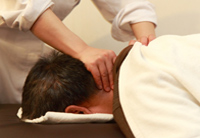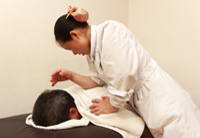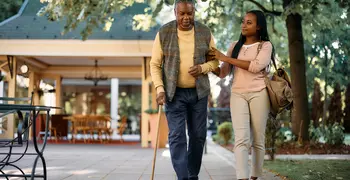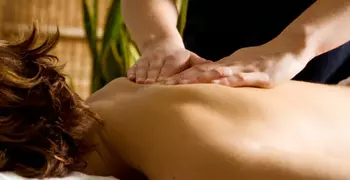Practices
Shiatsu
What is Shiatsu?
Shiatsu is a form of therapeutic bodywork from Japan. It uses kneading, pressing, soothing, tapping, and stretching techniques and is performed without oils through light, comfortable clothing.
"Shiatsu" translates as "finger pressure." There are different styles of Shiatsu, all of which have roots in one of three systems that developed in Japan in the early 1900s as a result of a resurgence of Japan's traditional medical therapies, including acupuncture and anma massage. Shiatsu developed at this time from the integration of traditional Japanese manual therapies with modern western medical knowledge.
In the U.S., Shiatsu is one of the main therapies within the larger profession of Asian Bodywork Therapy.
How can Shiatsu benefit your health and wellbeing?
Shiatsu is a non-invasive therapy that may help reduce stress and contribute to overall wellbeing. Proponents believe that it has both preventative and remedial effects.
Shiatsu can be used in the treatment of a wide range of internal, musculoskeletal, and emotional conditions. It is thought to reduce muscle stiffness, stimulate the skin, aid digestion, and influence the nervous system. Shiatsu is used to treat a wide range of chronic conditions, such as headaches, PMS, digestive disorders, fatigue, insomnia, fibromyalgia, stress, anxiety, and muskuloskeletal pain, including low back, neck, and joint pain.
The effect may be stimulating and invigorating or calming and sedative, depending on the goal of the session.
What are the principles of Shiatsu?
One of the fundamental concepts of Chinese/Japanese medicine is Qi (pronounced "chee"). This is the vital energy in our body that underlies all functioning.
Qi flows in specific pathways called meridians. The Shiatsu therapist accesses the Qi through points along the meridians called Vital Points. Health is present when there is abundant Qi in the meridians and the flow is unobstructed. When the Qi becomes deficient or out of balance, or the flow is obstructed, symptoms arise. Seemingly minor signs emerge, such as regular colds and flus, weekly or daily headaches, body aches and muscular pain, or digestive difficulties. These are indications of the imbalance of Qi. Shiatsu stimulates and harmonizes the flow of Qi throughout the body.
The Shiatsu therapist is trained to recognize patterns of disharmony in the body, even prior to physical signs appearing. Simple yet subtle changes are indications of an imbalance that, left alone, may progress to a point where symptoms appear. Balance can be restored with proper assessment and regular Shiatsu sessions. Shiatsu practitioners may also offer lifestyle and activity recommendations.
What happens in a Shiatsu session?
At the beginning of the session, the practitioner evaluates the client to determine the patterns of imbalance that may be present. It is important to assess the "state of the Qi" in order for the practitioner to give the client the most effective therapeutic session. Then the practitioner designs a plan that will give the client the most therapeutic benefit according to their individual needs.
 Shiatsu uses a variety of manual techniques, including pressure, kneading, soothing, tapping, and stretching to access the vital Qi of the body. In the case where the client's energy is low or deficient, the practitioner uses specific techniques to enhance and vitalize the Qi. When the client is over-stressed, wound-up, or anxious, the practitioner employs techniques to disperse the "excess" energy. In this way, the Qi is regulated. Shiatsu works to alleviate conditions, restore balance, and promote health.
Shiatsu uses a variety of manual techniques, including pressure, kneading, soothing, tapping, and stretching to access the vital Qi of the body. In the case where the client's energy is low or deficient, the practitioner uses specific techniques to enhance and vitalize the Qi. When the client is over-stressed, wound-up, or anxious, the practitioner employs techniques to disperse the "excess" energy. In this way, the Qi is regulated. Shiatsu works to alleviate conditions, restore balance, and promote health.
A regular maintenance program of Shiatsu is an excellent way to maintain wellness and improve vitality. This schedule will vary for each person. One Shiatsu session per month may work well to maintain balance for some. But for others, a high-stress job, family demands, an overactive lifestyle, lack of exercise, or other factors may require Shiatsu sessions on a more regular basis.
Is there good evidence?
Shiatsu is Japan's primary manual therapy, and there is ongoing research that is published in Japanese journals. This research is usually not published in English, and may not yet be available to the American audience.
In the U.S., Shiatsu is often considered a subset of either massage therapy or acupuncture, and thus, the main research grants for therapeutic bodywork have been focused on massage and other energy therapies. Most of what is available in terms of evidence in the U.S. is anecdotal, or it is from the experience of Shiatsu clients and therapists. However, schools and individuals are beginning to organize research studies for Shiatsu. There is some research on the efficacy of Shiatsu therapy currently being conducted in Europe.
But while the evidence is limited at this point, it is worthwhile to note that the risk is low and there are significant anecdotally-reported benefits.
Listed below are links to research related to shiatsu therapy:
- The Effects and Experiences of Shiatsu: A Cross-European Study
- The Effects of Shiatsu: Findings From a Two-Country Exploratory Study
How to find a practitioner
The professional organization that represents Shiatsu and Asian bodywork therapists exclusively is the American Organization for Bodywork Therapies of Asia (AOBTA). The AOBTA website has a Find a Practitioner page.
Shiatsu and Asian Bodywork Therapists (ABT) are located throughout the United States, often in the vicinity of a school. The highest credential for Shiatsu and ABT is the national certification exam for Asian Bodywork Therapy administered by the National Certification Commission for Acupuncture and Oriental Medicine (NCCAOM). Practitioners who pass this exam become a Diplomate of ABT. The website for NCCAOM also has a Find a Practitioner page.
In addition, graduates from a Shiatsu program are eligible to take (if all requirements are met) the National Certification Exam for Therapeutic Massage and Bodywork from the National Certification Board for Therapeutic Massage and Bodywork (NCBTMB).
Long, Andrew and Mackay, Hannah (2003). The Effects of Shiatsu: Findings From a Two-Country Exploratory Study. Journal of Alternative and Comprehensive Medicine, 9(4), 539-547.
American Organization for Bodywork Therapies of Asia (AOBTA)
The Effects and Experiences of Shiatsu: A Cross-European Study
National Certification Commission for Acupuncture and Oriental Medicine (NCCAOM)




